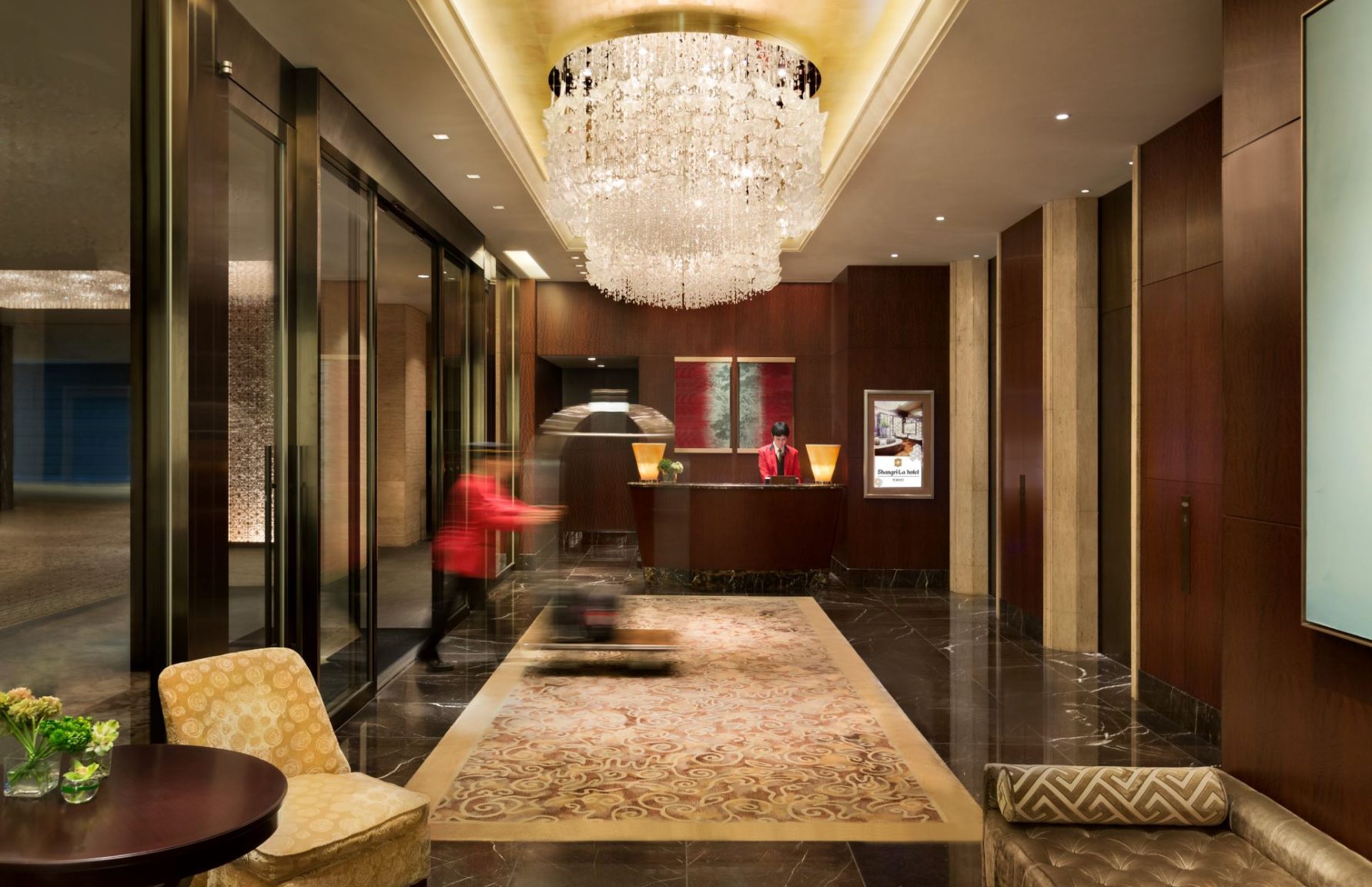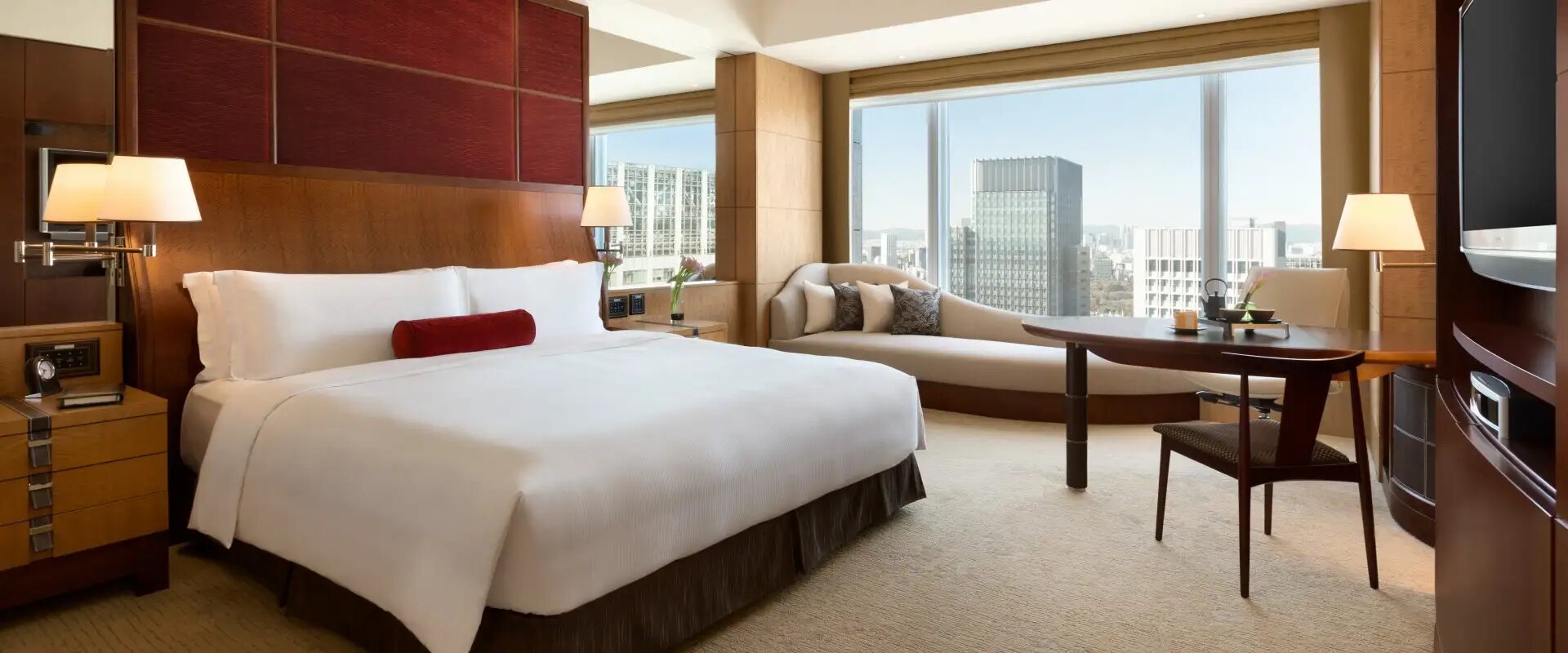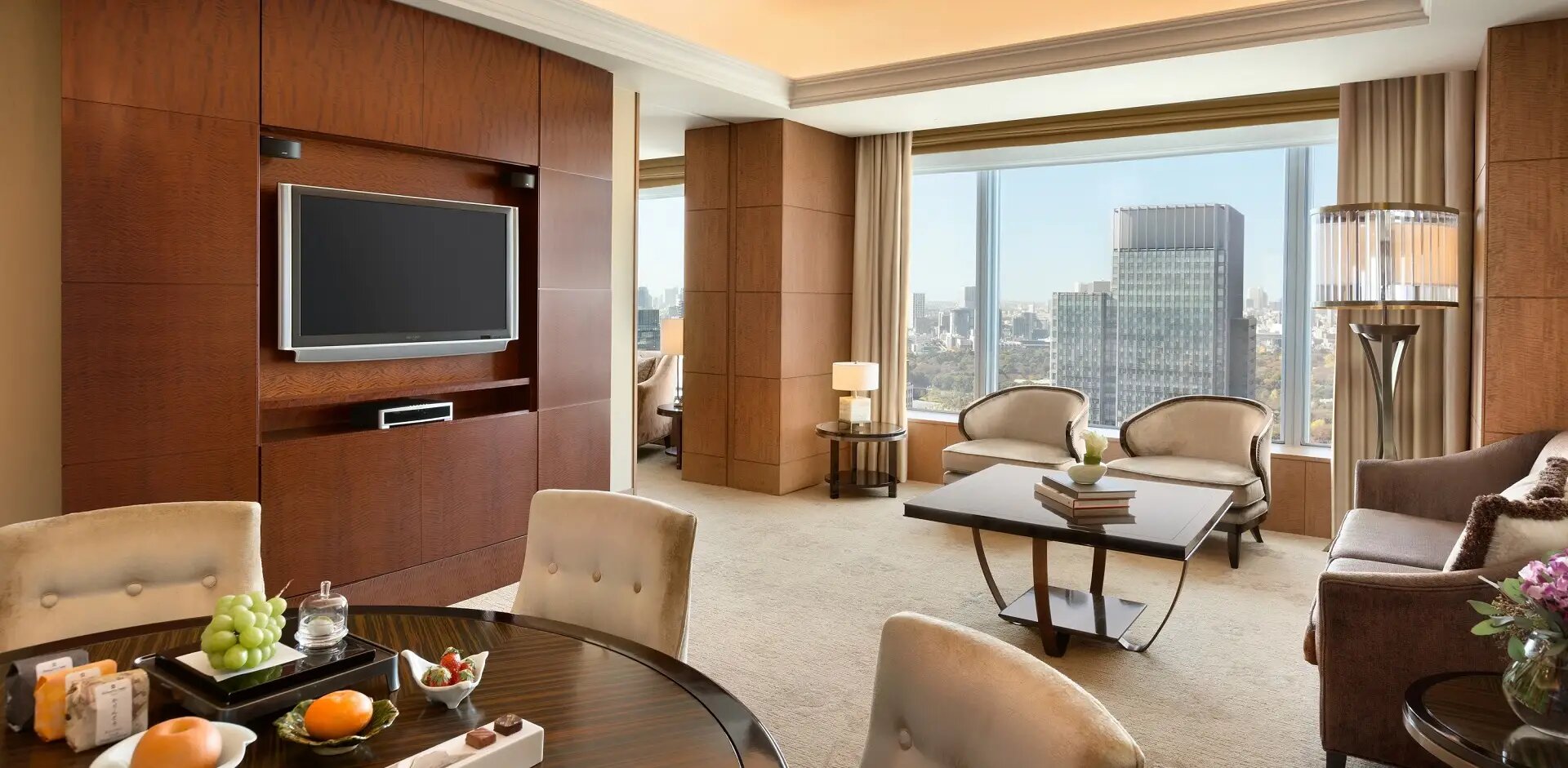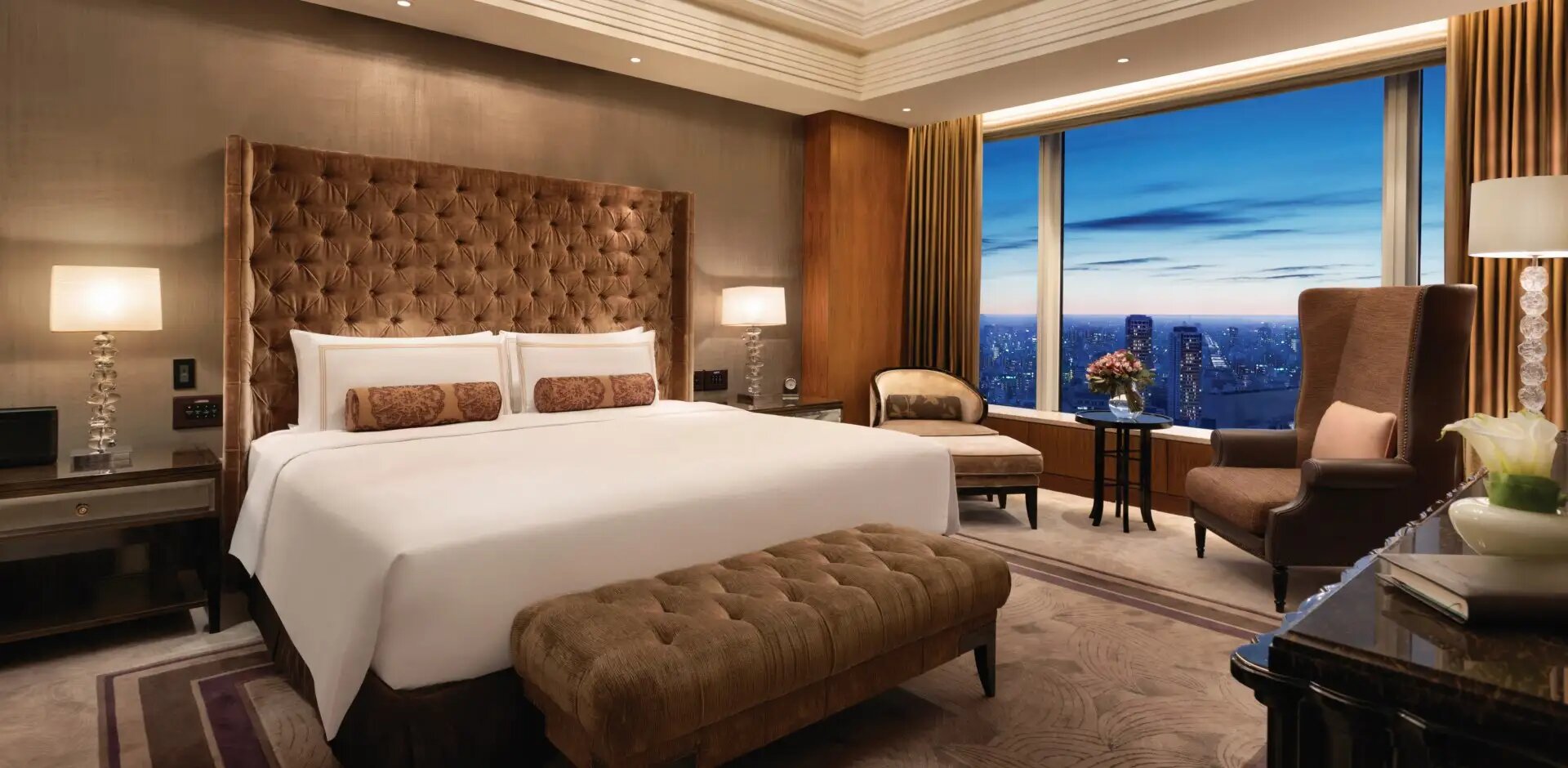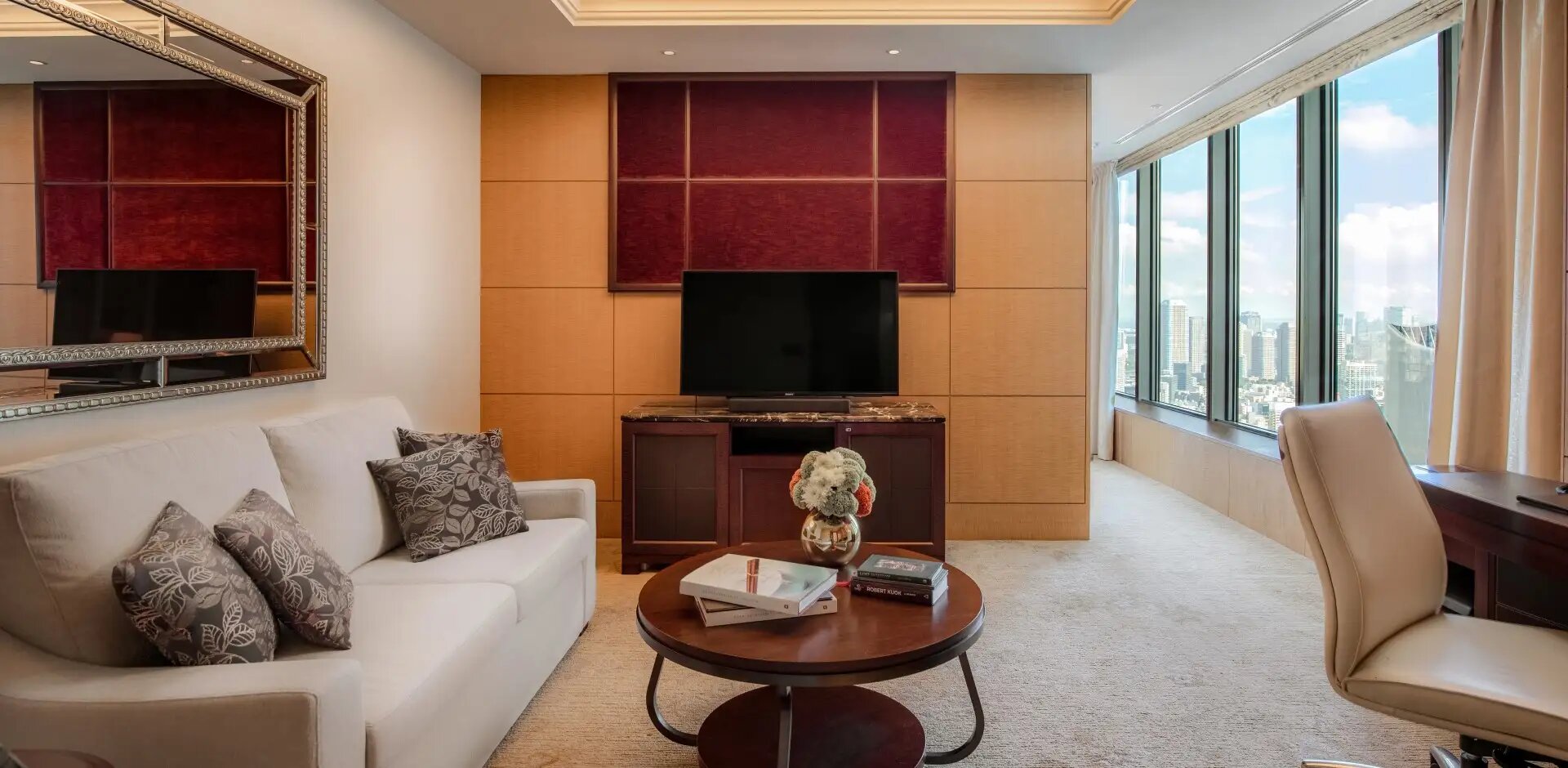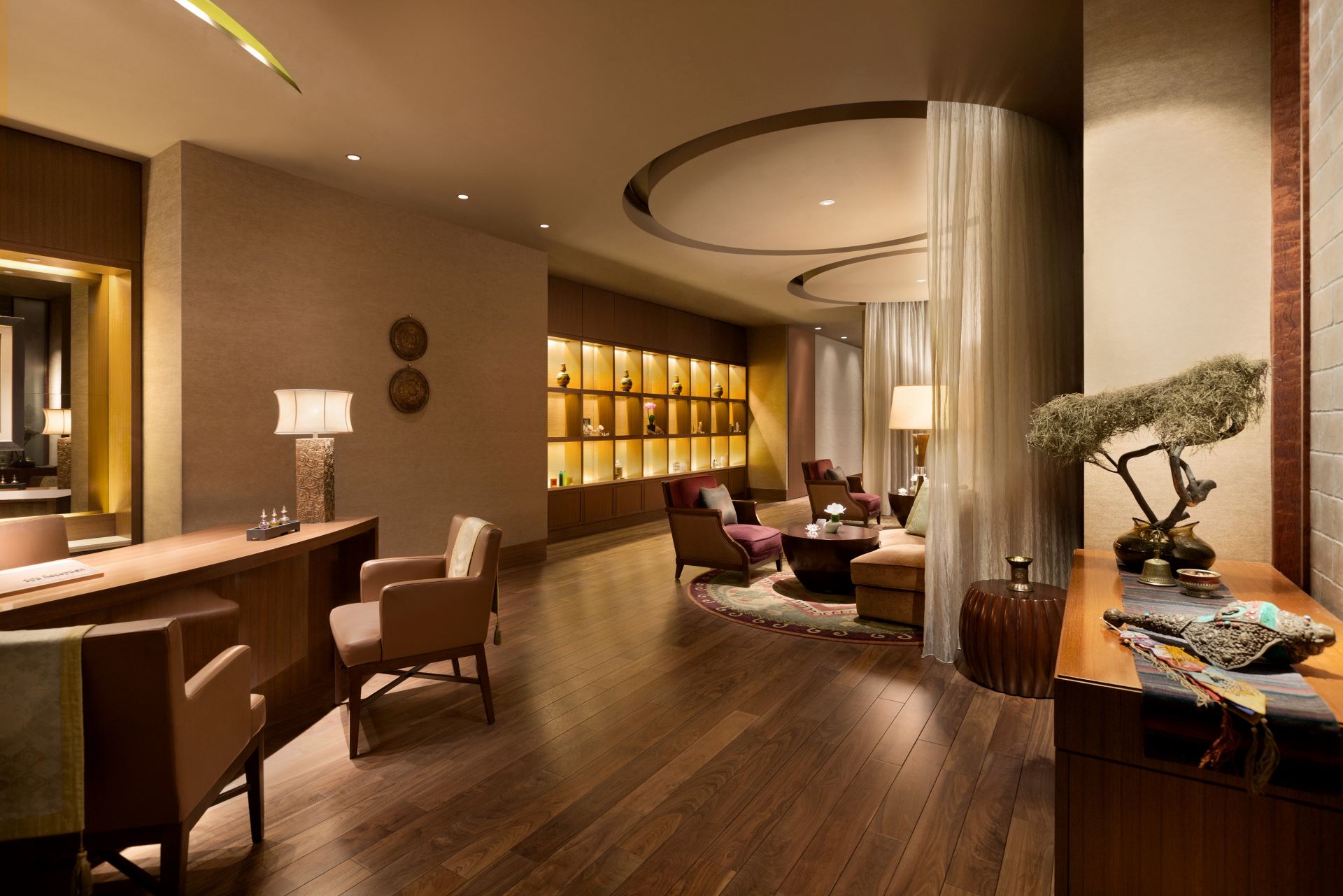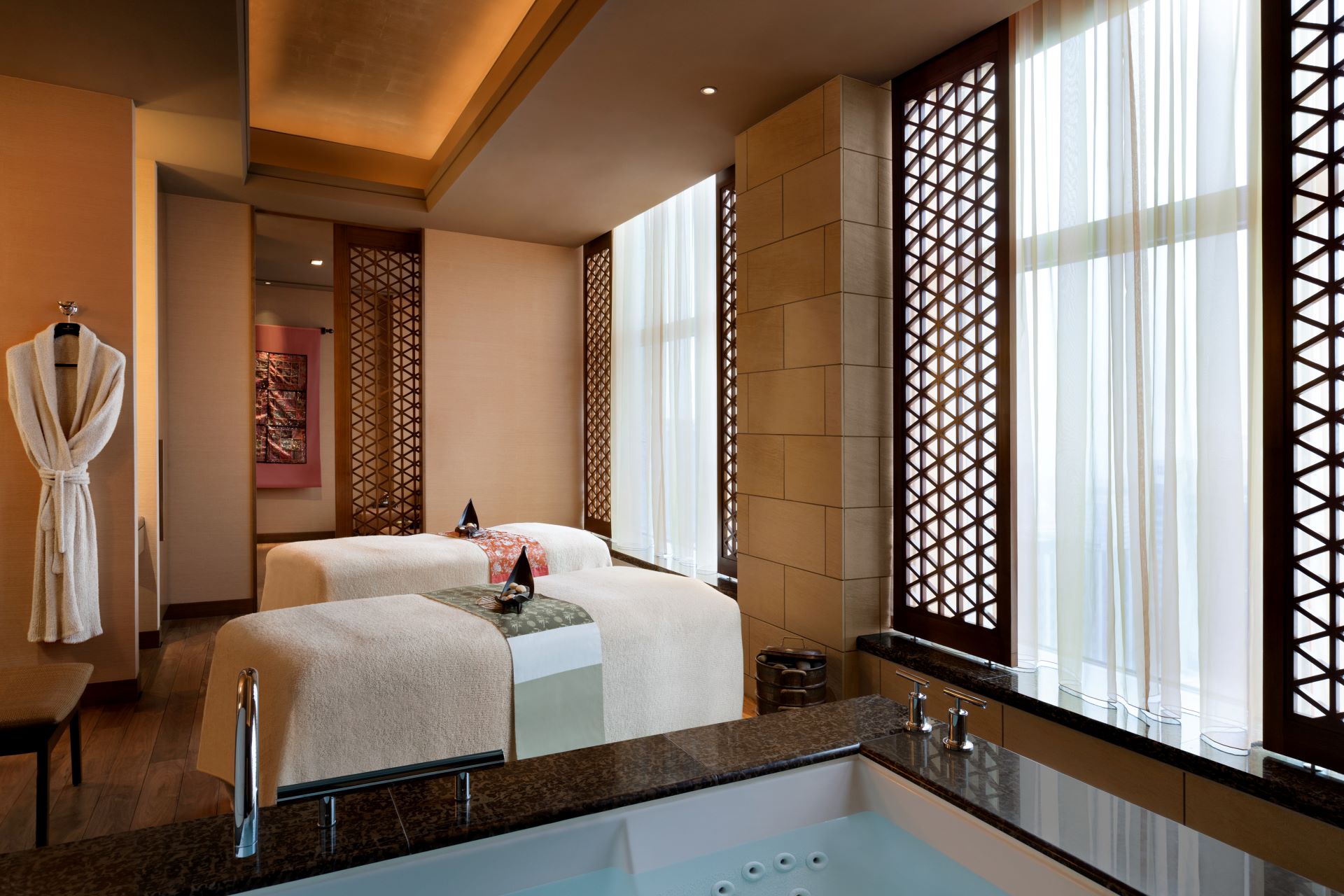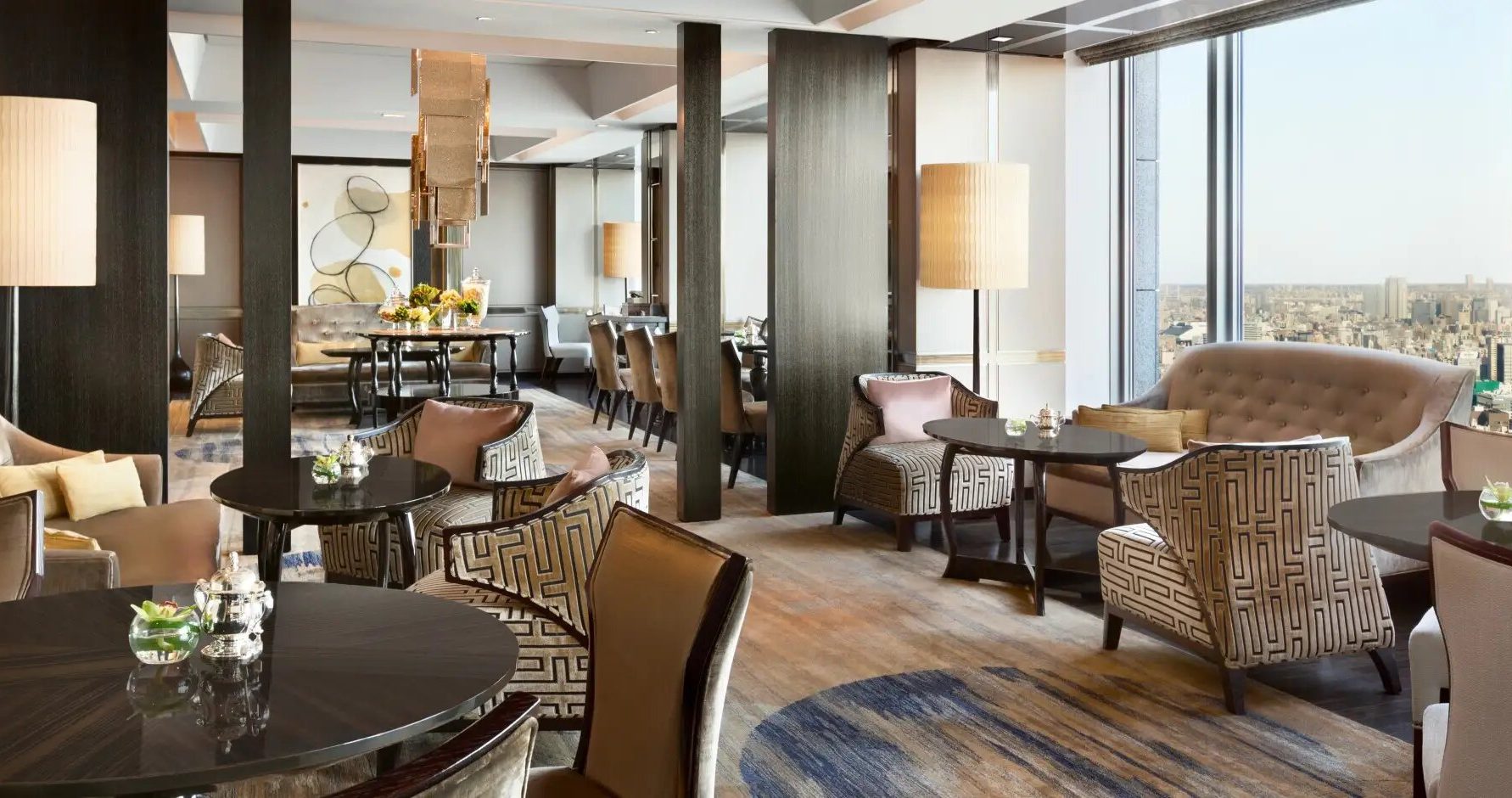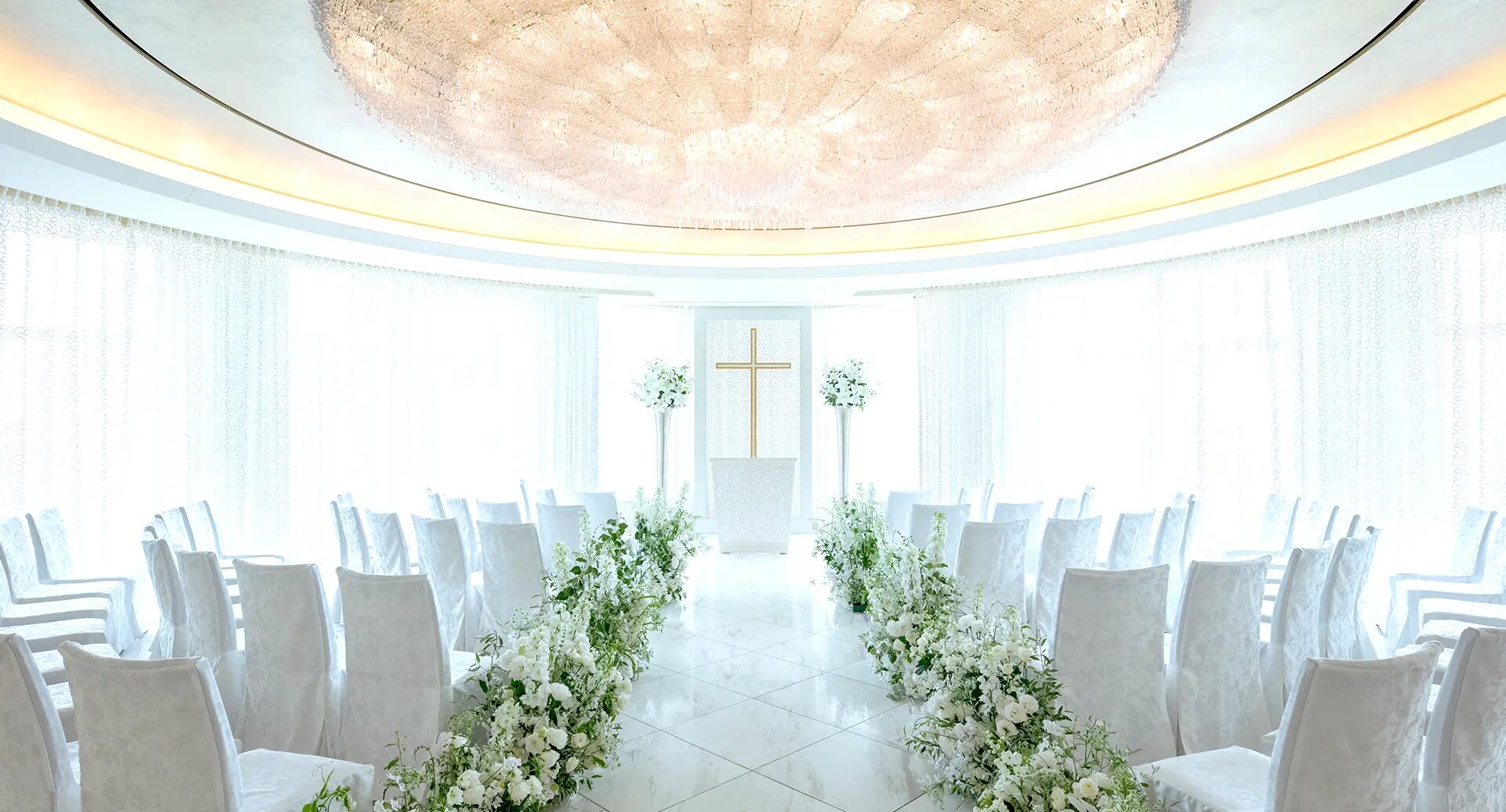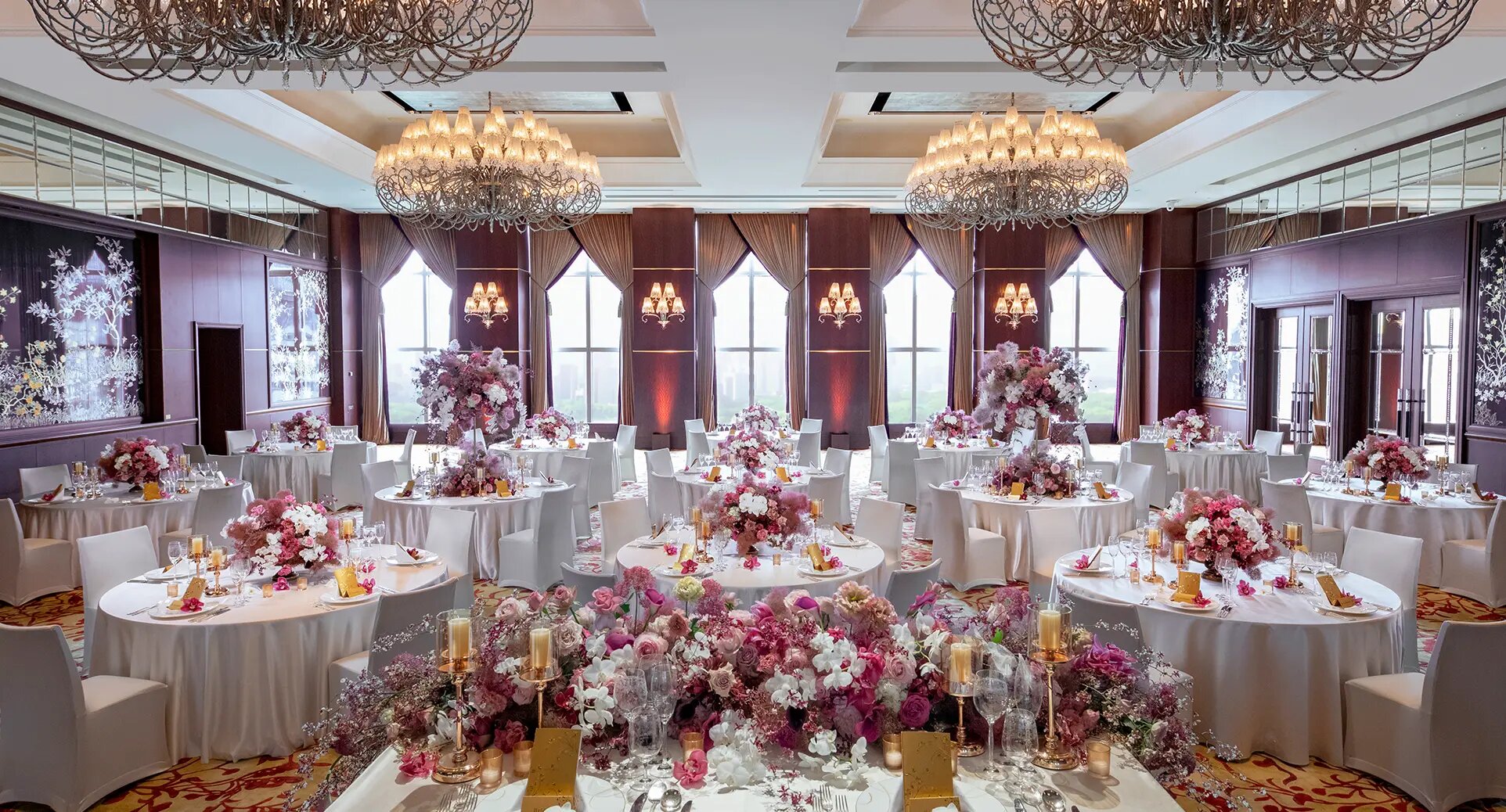Shangri-La Tokyo: Luxury Redefined Above Tokyo Station
Inside Shangri-La Tokyo: Suites, Dining, Spa & Horizon Club Views
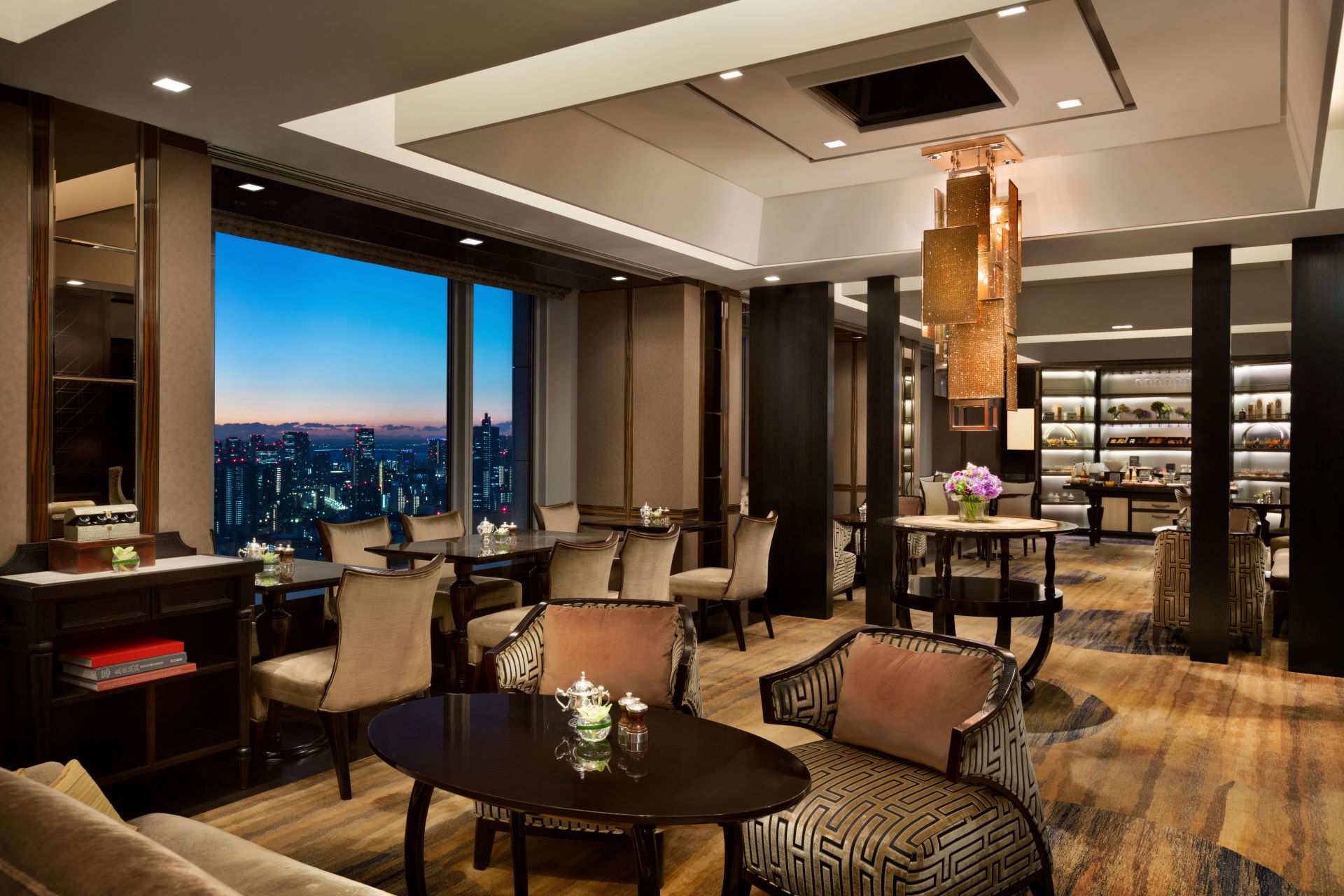
Shangri-La Tokyo opened its doors in 2009 as the Hong Kong-based luxury group’s first outpost in Japan. Sitting just above Tokyo Station’s Marunouchi side, it offers immediate access to the city’s transit arteries and yet, it feels deliberately apart from them. Rising from the top floors of the Marunouchi Trust Tower Main, it presents itself as a cocoon of discretion and calm above the capital’s constant motion.
With 200 rooms and suites, expansive views over the Imperial Palace and Tokyo Skytree, and, on clear days, even Mount Fuji, this hotel draws a mix of well-heeled travelers, seasoned business leaders, and culture-savvy visitors who appreciate understatement over spectacle.
The brand’s ethos, built around core values like Sincerity, Humility, or Courtesy, runs through the experience, developing a sensation that’s far from flashy indulgence, but rather practiced grace. This is luxury that doesn’t announce itself. It simply functions in a quiet, yet flawless manner, and with unmistakable presence.
*Please note that this article contains affiliate links.
At a Glance: Highlights of Shangri-La Tokyo
Before unfolding into its many details, Shangri-La Tokyo leaves an immediate impression of quiet command. Interiors are defined by dark wood, silk paneling, custom chandeliers, and curated artworks that bridge Asian heritage with Japanese nuance.
The hotel’s signature Chi, The Spa at Shangri-La, the first in Japan, draws from traditional healing philosophies of the East. Dining spans from the contemporary Italian menu at Piacere to Nadaman, a refined take on kaiseki-style Japanese cuisine. Horizon Club, perched on the 37th floor, offers one of the city’s most exclusive breakfast views.
1-min access to Tokyo Station below makes the location a logistical dream for travelers, while the upper floors shield you from the city’s noise. And throughout the experience, the emphasis remains on balance, privacy, and fluid service.
Rooms & Suites: Space and Stillness in the Sky
With a minimum size of 50 square meters, even the entry-level Deluxe Rooms at Shangri-La Tokyo offer a sense of openness rarely found in the city. Floor-to-ceiling windows frame views of the Imperial Palace, Skytree, or Tokyo Bay, depending on orientation, and the interiors—created by Hirsch Bedner Associates—favor warm tones, subtle textures, and residential comfort.
The hotel offers a total of 200 rooms, including a variety of suite categories such as the Executive Suite, Premier Suite, and Presidential Suite. Each includes expanded living areas, marble-clad bathrooms with deep-soaking tubs, and walk-in wardrobes, with some suites featuring personal spa rooms for in-room treatments.
Dining: The Refinement of Taste with Piacere & Nadaman
Dining at Shangri-La Tokyo follows the same principles as its rooms: charm, sophistication, and a refusal to rush anything. Each venue within the hotel offers a distinct lens on luxury dining, whether through Italian modernity, Japanese tradition, or elegant lounge classics.
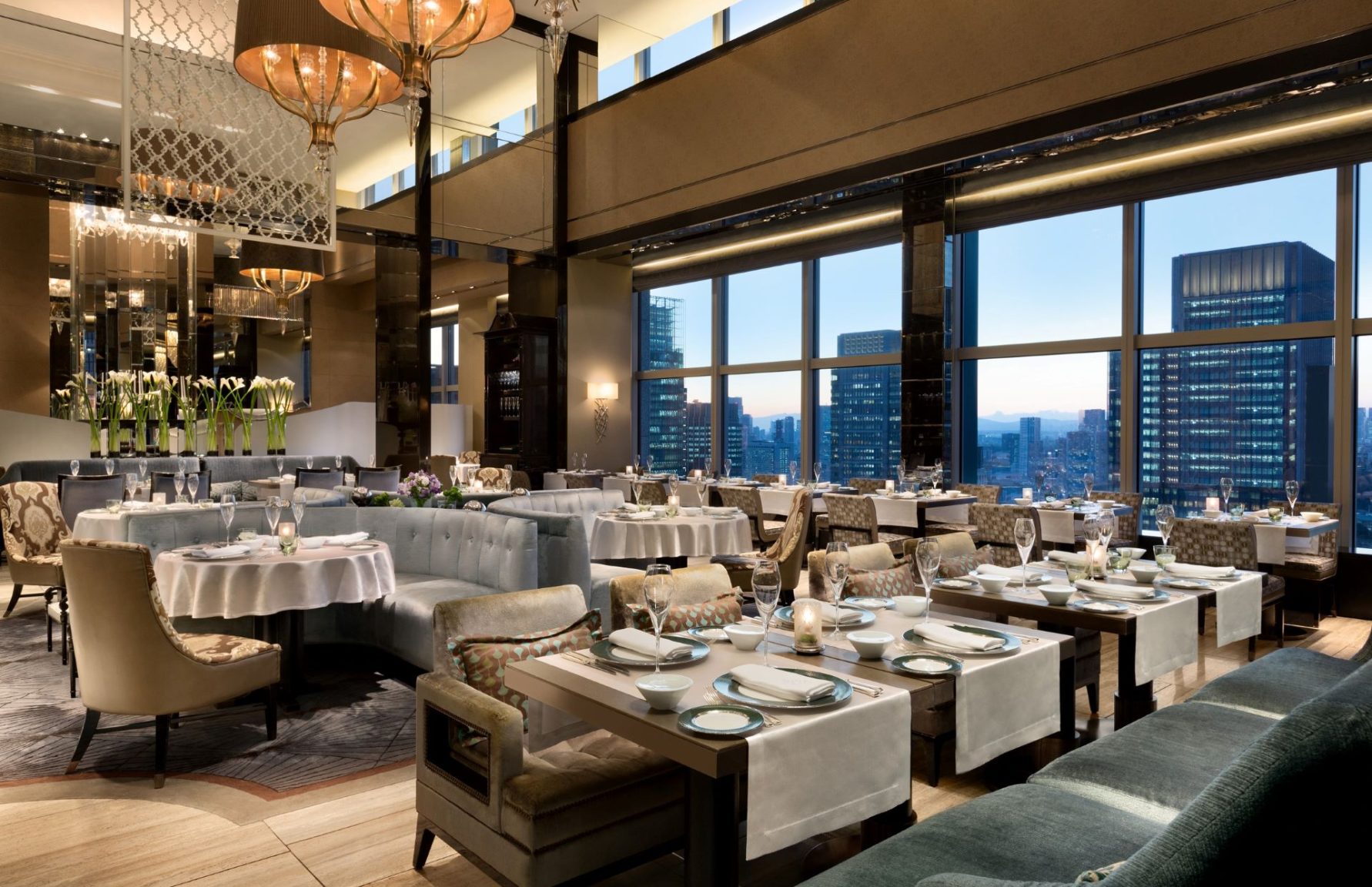
Piacere, the flagship Italian restaurant, occupies a sunlit corner of the hotel with double-height windows and interiors by André Fu. Its seasonal course menus center on Japanese-sourced ingredients prepared with Italian technique and understated flair. The wine cellar has received multiple awards, and the restaurant enforces an adults-only policy, reinforcing its quiet, uninterrupted atmosphere.
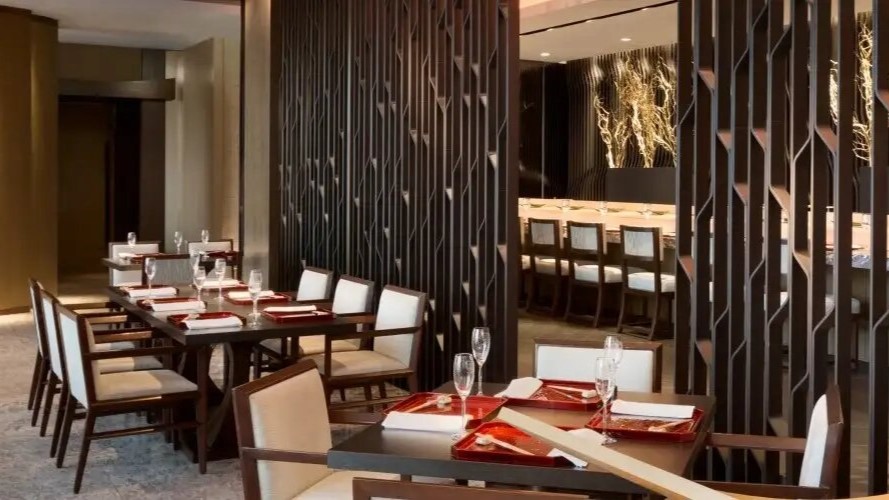
Nadaman, part of a distinguished restaurant lineage dating back to 1830, prides itself on the height of its kaiseki dining. Sleek design and the best of the local gastronomic tradition guide the experience to maintain an air of traditional hospitality through the lens of contemporary aesthetics.
For more casual moments, The Lobby Lounge serves one of Tokyo’s most elegant afternoon teas beneath a chandelier of 890 hand-blown crystal ginkgo leaves. Seasonal menus feature a variety of international specialties, and the space transitions naturally from daytime meetings to pre-dinner aperitifs.
Across all dining venues, the hotel emphasizes sustainable sourcing under its “Rooted in Nature” program, highlighting ingredients from domestic producers committed to responsible agriculture.
Chi, The Spa at Shangri-La: Urban Retreat with Asian Roots
Tucked away on the 29th floor, Chi, The Spa at Shangri-La, offers a retreat that feels worlds removed from the office towers and bullet trains below. This was the first Chi Spa to open in Japan, and it remains one of the few in Tokyo dedicated entirely to traditional Asian and Japanese healing philosophies.
The spa includes five private suites, each designed to accommodate full-body treatments in quiet seclusion. Therapists tailor their sessions to guest preferences, incorporating services like body scrubs, facials, acupressure or many kinds of massages.
Adjacent to the spa is a fully equipped fitness club and a 20-meter indoor swimming pool, both facing the Imperial Palace gardens. The design here is functional but calm—soft lighting, muted palettes, and expansive windows keep the mood consistent throughout.
Whether you’re recovering from jet lag or simply resetting after a long day in the city, Chi’s approach is unrushed and deeply restorative. It’s a fitting extension of the hotel’s wider philosophy: balance, stillness, and attention to the smallest detail.
Horizon Club: Tailored Privacy Above the City
Occupying the top floor of Shangri-La Tokyo, the Horizon Club offers one of the most exclusive stays in the capital, designed for guests who value privacy, efficiency, and elevated service. With panoramic views stretching from the Imperial Palace gardens to Tokyo Bay, its exclusive lounge is equally suited to morning meetings or an end-of-day quiet drink.
Club guests enjoy an express check-in and check-out service, exclusive amenities and the support of a dedicated concierge team. Throughout the day, the lounge serves refreshments, afternoon tea, and evening cocktails. Seating is arranged to preserve personal space, and the overall ambiance is hushed and deliberate to feel like an old-school salon.
Weddings & Events: A Stage with a Skyline
Shangri-La Tokyo’s 27th floor transforms into a refined, bespoke event space with sweeping views over Marunouchi and the Imperial Palace. An elevated setting, quite literally, for occasions that require more than just decoration.
The hotel’s wedding chapel, flanked by floor-to-ceiling windows, creates a well-lit space for the most magical experience. The reception and ballroom venue, accented with custom-designed chandeliers and a spectacular projection mapping, makes it the perfect choice for the most unforgettable wedding event.
There are also several different event spaces suitable for a variety of needs and capacity requirements.
Art & Design – From Ginkgo Leaves to Glass Landscapes
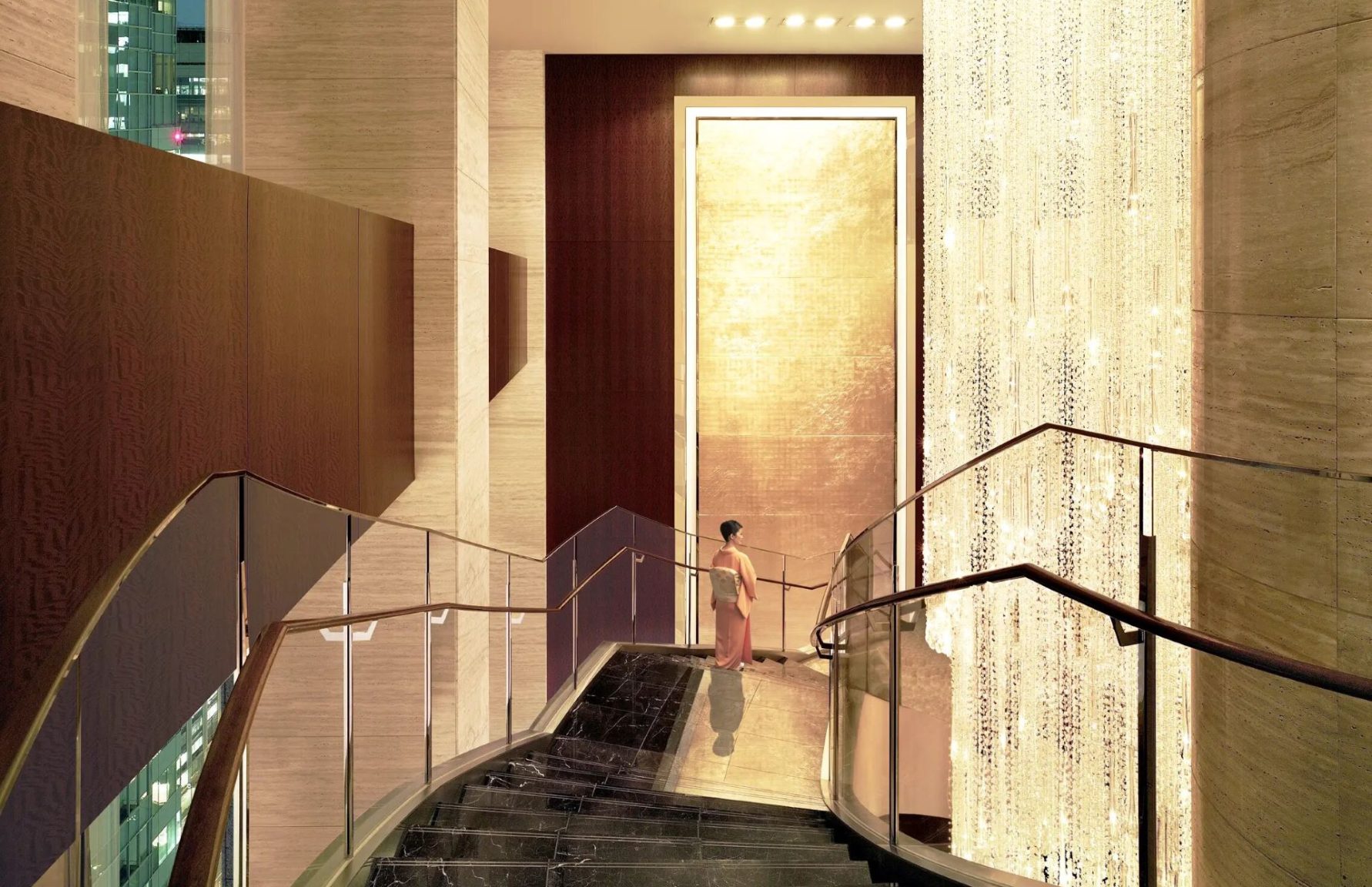
At Shangri-La Tokyo, art is integral to the hotel’s identity. Over 2,000 artworks are displayed across the property, with an emphasis on Asian heritage pieces: Suzhou embroidery, Chinese lacquerware, ceramic installations, or glass artworks, among many other specially commissioned examples.
One of the visual centerpieces is the hotel’s signature staircase chandelier, which spans three floors and weighs an astonishing 2,000 kilograms. Composed of over 486,000 individual crystals, it anchors the building’s vertical space with movement and light, especially striking when viewed from below.
Each area of the hotel carries its own design vocabulary. The Lobby Lounge is crowned by a sculpture of 890 hand-blown crystal ginkgo leaves, while guestrooms alternate between the refined warmth of Hirsch Bedner Associates and the cool modernism of André Fu.
From materials to lighting, the curation is intentional: soft curves, natural finishes, and a sense of continuity between public spaces and private rooms. Rather than dazzle, the design aims to calm—while still offering moments of architectural punctuation that remind you exactly where you are.
How to Get to Shangri-La

Shangri-La Tokyo is located in the Marunouchi Trust Tower Main, directly adjacent to Tokyo Station. Guests can reach the hotel in just minutes from the Yaesu North Exit, with covered access that avoids street-level traffic and weather.
For those arriving by Shinkansen, the hotel is one of the most conveniently located luxury properties in the city. International travelers using Narita or Haneda Airport can also reach Tokyo Station via the Narita Express or Tokyo Monorail + JR lines in under an hour.
Once inside Tokyo Station, a complimentary private hotel escort service, called “Meet & Greet Service,” is available upon request to guide guests directly from the Narita Express or Shinkansen train platforms to the reception desk.
Nearby landmarks such as Ginza, Nihonbashi, and Marunouchi, are all within walking distance, offering easy access to shopping, dining, and cultural experiences without ever needing to board a train.
 Access Access |
1-min walk from Tokyo Station |
|---|---|
 Official Website Official Website |
https://www.shangri-la.com/tokyo/shangrila/ |
<<Book “Shangri-La Tokyo” at the best price!!>>
Shangri-La Tokyo operates with the quiet confidence of a hotel that knows exactly who it’s for. It doesn’t rely on flash or trend-chasing gestures. Instead, it delivers something more difficult: consistency, discretion, and a deeply felt sense of care.
From the spacious guestrooms to the sweeping views at the Horizon Club, from the curated dining experiences to the grounded calm of Chi, The Spa, everything is orchestrated with subtlety. The hotel attracts solo travelers in search of rest, couples seeking privacy, and global business figures who can appreciate the finer things that only the best of luxury has to offer.
For more information about top accommodations and the best places to visit in Tokyo, be sure to check out the following articles!
Written by
Photographer, journalist, and avid urban cyclist, making sense of Japan since 2017. I was born in Caracas and lived for 14 years in Barcelona before moving to Tokyo. Currently working towards my goal of visiting every prefecture in Japan, I hope to share with readers the everlasting joy of discovery and the neverending urge to keep exploring.





